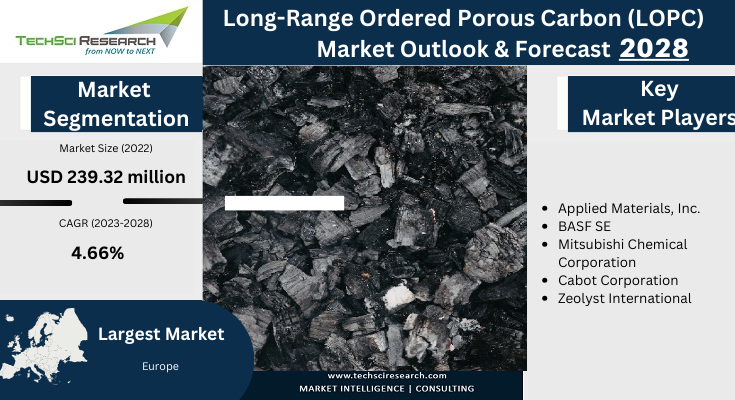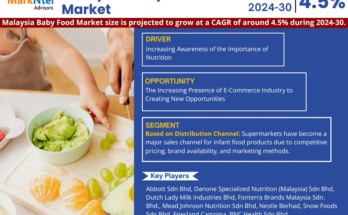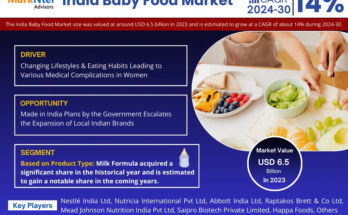According to TechSci Research report, “Long-Range Ordered Porous Carbon (LOPC) Market – Global Industry Size, Share, Trends, Competition Forecast & Opportunities, 2028”, the Global Long-Range Ordered Porous Carbon (LOPC) Market has valued at USD 239.32 million in 2022 and is anticipated to project robust growth in the forecast period with a CAGR of 4.66% through 2028. In the fast-evolving landscape of materials science, technological advancements have emerged as the primary catalyst driving the demand for Long-Range Ordered Porous Carbon (LOPC) on a global scale. LOPC, characterized by its well-defined, uniform pore structure and high surface area, has found multifaceted applications in various industries, with its increasing demand closely intertwined with the relentless pursuit of innovation.
One of the most prominent factors propelling the demand for LOPC is its pivotal role in energy storage and conversion technologies. As the world shifts towards sustainable energy sources and seeks efficient means of energy storage, LOPC has emerged as an ideal candidate. Its precisely engineered pore structure allows for enhanced electrochemical performance in supercapacitors and batteries, leading to higher energy densities and faster charging capabilities. Furthermore, ongoing research in materials science has led to breakthroughs in LOPC synthesis techniques, allowing for the customization of pore size and distribution, which is crucial for optimizing energy storage devices.
Technological advancements in LOPC production processes have also played a crucial role in meeting the growing demand. Innovations in template synthesis, chemical activation, and post-treatment methods have not only improved the material’s quality but have also made its production more scalable and cost-effective. This has lowered the barriers to entry for various industries, from energy to environmental remediation, fostering a surge in demand.
In the realm of environmental sustainability, LOPC is making significant strides. Technological advancements have enabled the development of LOPC-based adsorbents that excel in capturing pollutants, heavy metals, and greenhouse gases from air and water. As global awareness of environmental issues grows, governments and industries are increasingly investing in innovative solutions to mitigate pollution and address climate change. LOPC’s exceptional adsorption properties and its capacity to be tailored to specific contaminants make it an attractive choice for addressing these challenges. Thus, the demand for LOPC in environmental applications continues to rise in tandem with technological progress.
The advent of advanced analytical techniques has further accelerated LOPC’s demand. Technologies such as electron microscopy, X-ray diffraction, and spectroscopy have enabled researchers to gain deeper insights into the material’s properties and behavior at the nanoscale. This, in turn, has fueled the development of novel LOPC-based materials with enhanced performance characteristics. As the understanding of LOPC’s structure-function relationships becomes more refined, new applications and markets are continually emerging, driving further demand.
In the healthcare sector, LOPC’s exceptional properties have not gone unnoticed. Technological advancements have led to the creation of LOPC-based drug delivery systems with precise control over drug release kinetics. This has paved the way for targeted therapies, reducing side effects and improving patient outcomes. As the healthcare industry increasingly adopts personalized medicine approaches, the demand for LOPC in pharmaceutical applications is anticipated to grow substantially.
Furthermore, the global push for sustainable transportation solutions has ignited interest in LOPC for the development of advanced catalysts in fuel cells and hydrogen production. As governments worldwide set ambitious targets for reducing greenhouse gas emissions, fuel cell technologies are seen as a promising avenue for achieving these goals. LOPC’s unique properties, coupled with advancements in catalyst design and fabrication, position it as a key component in these transformative technologies.
In conclusion, technological advancement stands as the driving force behind the surging demand for LOPC in the global market. Across diverse industries, from energy storage to environmental remediation, healthcare, and transportation, LOPC’s unique attributes have found myriad applications, and ongoing innovations continue to unlock its full potential. As technology continues to advance, so too will the demand for LOPC, shaping industries and driving progress toward a more sustainable and technologically advanced future.
Browse over XX market data Figures spread through XX Pages and an in-depth TOC on “Long-Range Ordered Porous Carbon (LOPC) Market.” @ https://www.techsciresearch.com/report/long-range-ordered-porous-carbon-lopc-market/19514.html
The Global Long-Range Ordered Porous Carbon (LOPC) Market is segmented into application, regional distribution, and company.
Based on the application, The energy storage segments are projected to experience rapid growth during the forecast period. LOPC materials possess a high surface area and well-defined pore structures, which allow for a significant amount of charge storage. This makes them ideal for use as electrodes in energy storage devices like supercapacitors and batteries. The ordered porous structure of LOPC materials allows for rapid ion transport and electron transfer, enabling fast charge and discharge rates. This is critical for applications where rapid energy storage and release are required, such as electric vehicles and grid energy storage systems.
LOPC materials exhibit high specific capacitance and energy density, which are essential characteristics for supercapacitors and energy storage applications. They can store a large amount of electrical energy per unit of mass or volume. LOPC materials often have excellent cycling stability, meaning they can endure a high number of charge-discharge cycles without significant degradation. This is crucial for long-lasting and durable energy storage devices.
As the electric vehicle market grows, there is a rising demand for high-performance energy storage materials. LOPC-based supercapacitors, which can provide rapid energy storage and release for regenerative braking and acceleration, are of particular interest in the EV industry. LOPC materials play a role in integrating renewable energy sources like wind and solar into the grid. They can store excess energy generated during periods of high production and release it when demand is high or when renewable energy generation is low.
LOPC materials are used in grid energy storage systems to stabilize the grid, manage peak demand, and enhance the reliability of electricity supply. Their fast response time and long cycle life make them valuable in these applications.
The Europe region has emerged as the dominant player in the global Long-Range Ordered Porous Carbon (LOPC) market. Europe has a robust R&D infrastructure with leading universities, research institutions, and companies actively engaged in materials science and energy storage research. This environment fosters innovation and the development of advanced materials like LOPC. Many European countries have committed to investing in clean energy technologies and sustainable materials. Government funding and incentives for research and development projects related to energy storage materials can drive LOPC development and adoption.
Europe has set ambitious climate goals and is actively transitioning toward a greener and more sustainable energy system. As a result, there is a growing need for efficient energy storage solutions, making LOPC materials particularly attractive. Europe has witnessed significant growth in the electric vehicle market. LOPC-based supercapacitors and batteries have the potential to play a role in advancing EV technology, which aligns with Europe’s focus on reducing greenhouse gas emissions from transportation.
Europe has advanced manufacturing capabilities that can support the production of high-quality LOPC materials and energy storage devices. Well-established supply chains and manufacturing processes are advantageous for market leadership.
Major companies operating in the Global Long-Range Ordered Porous Carbon (LOPC) Market are:
- Applied Materials, Inc.
- BASF SE
- Mitsubishi Chemical Corporation
- Cabot Corporation
- Zeolyst International
- Albemarle Corporation
- Calgon Carbon Corporation
- Entegris Inc.
- Sumitomo Chemical Co. Ltd.
To Download FREE Sample Pages of this Report📥 @ https://www.techsciresearch.com/sample-report.aspx?cid=19514
Customers can also request for 10% free customization on this report.
“The global Mesoporous Carbons Market is witnessing robust growth driven by technological advancements across multiple industries. Mesoporous carbons, known for their unique nanoporous structure, are finding increasing applications in energy storage, environmental remediation, pharmaceuticals, and more.
In the realm of energy storage, these materials are crucial for improving battery and supercapacitor technologies, offering higher energy density and faster charging. In environmental applications, mesoporous carbons are being used for pollutant adsorption and greenhouse gas capture, aiding in sustainable solutions for water and air purification.
The pharmaceutical and healthcare sectors benefit from controlled drug delivery and medical imaging advancements enabled by mesoporous carbons, supporting precise dosing and targeted therapy. Additionally, the automotive and aerospace industries are turning to these materials to enhance fuel efficiency through lightweight components.
As technological innovations continue to enhance mesoporous carbon properties and applications, the market is poised for sustained expansion, offering solutions to pressing global challenges and contributing to advancements in diverse industries,” said Mr. Karan Chechi, Research Director with TechSci Research, a research-based management consulting firm.
“Long-Range Ordered Porous Carbon (LOPC) Market- Global Industry Size, Share, Trends, Opportunity, and Forecast, 2018-2028 Segmented by Application (Energy Storage, Chemical Catalysis, Ion Screening, and Others), By Region and Competition”, has evaluated the future growth potential of Global Long-Range Ordered Porous Carbon (LOPC) Market and provides statistics & information on market size, structure and future market growth. The report intends to provide cutting-edge market intelligence and help decision-makers take sound investment decisions. Besides, the report also identifies and analyzes the emerging trends along with essential drivers, challenges, and opportunities in the Global Long-Range Ordered Porous Carbon (LOPC) Market.
You may also read:
Home Insecticides Market Worth [2028], Overview, Trends, Forecast
Isoxaflutole Market Advancements and Business Opportunities [2028]
Penoxsulam Market [2028] – Analysis, Trends, & Insights
Table of Content-Long-Range Ordered Porous Carbon (LOPC) Market
- Product Overview
1.1. Market Definition
1.2. Scope of the Market
1.2.1. Markets Covered
1.2.2. Years Considered for Study
1.2.3. Key Market Segmentations
- Research Methodology
2.1. Objective of the Study
2.2. Baseline Methodology
2.3. Key Industry Partners
2.4. Major Association and Secondary Applications
2.5. Forecasting Methodology
2.6. Data Triangulation & Validation
2.7. Assumptions and Limitations
- Executive Summary
3.1. Overview of the Market
3.2. Overview of Key Market Segmentations
3.3. Overview of Key Market Players
3.4. Overview of Key Regions/Countries
3.5. Overview of Market Drivers, Challenges, Trends
- Impact of COVID-19 on Global Long-Range Ordered Porous Carbon (LOPC) Market
- Voice of Customer
- Global Long-Range Ordered Porous Carbon (LOPC) Market Outlook
6.1. Market Size & Forecast
6.1.1. By Value & Volume
6.2. Market Share & Forecast
6.2.1. By Application (Energy Storage, Chemical Catalysis, Ion Screening, and Others)
6.2.2. By Region
6.2.3. By Company (2022)
6.3. Market Map
- Asia Pacific Long-Range Ordered Porous Carbon (LOPC) Market Outlook
7.1. Market Size & Forecast
7.1.1. By Value & Volume
7.2. Market Share & Forecast
7.2.1. By Application
7.2.2. By Country
7.3. Asia Pacific: Country Analysis
7.3.1. China Long-Range Ordered Porous Carbon (LOPC) Market Outlook
7.3.1.1. Market Size & Forecast
7.3.1.1.1. By Value & Volume
7.3.1.2. Market Share & Forecast
7.3.1.2.1. By Application
7.3.2. India Long-Range Ordered Porous Carbon (LOPC) Market Outlook
7.3.2.1. Market Size & Forecast
7.3.2.1.1. By Value & Volume
7.3.2.2. Market Share & Forecast
7.3.2.2.1. By Application
7.3.3. Australia Long-Range Ordered Porous Carbon (LOPC) Market Outlook
7.3.3.1. Market Size & Forecast
7.3.3.1.1. By Value & Volume
7.3.3.2. Market Share & Forecast
7.3.3.2.1. By Application
7.3.4. Japan Long-Range Ordered Porous Carbon (LOPC) Market Outlook
7.3.4.1. Market Size & Forecast
7.3.4.1.1. By Value & Volume
7.3.4.2. Market Share & Forecast
7.3.4.2.1. By Application




